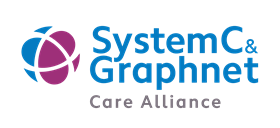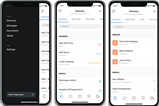How data will help ICSs support those most at risk, writes Markus Bolton
![]()
This is paid-for content from our commercial partners. Find out more
Our journey through the pandemic continues to be a moving target. However, there is one thing that many of us do agree on. When it comes to the British health and social care system, we should embrace the changes and progress that the covid-19 experience has sparked. There should be no going back to the old normal.
Sponsored by
Covid shone a spotlight on the inequalities of our healthcare system, and the problems associated with viewing healthcare in isolation from social factors. It accelerated integrated working, as health and care leaders joined forces to deliver a record-breaking vaccine programme, and prompted new conversations around prevention, as hospital beds became even scarcer.
The government’s focus is now very much on using data and actionable insights to address all factors that can produce and maintain health, not just helping people once they’re sick.
Population health will unlock long-lasting change
Understanding population health will be key to moving health and social care forwards, and quality, real-time data, accessible across Integrated Care Systems, needs to be at the heart of this. The ICSs that have been tasked with improving the wellbeing of their populations, must have the ability to see what’s happening to their citizens, and where the problems really lie, for them to be able to plan targeted action support.
Fortunately, population health management has been recognised by the NHS as playing a crucial part in preventing ill-health and addressing health inequalities. It has been highlighted in the organisation’s 2022-23 priorities and operational planning guidance, published on 24 December 2021 (page 29), which states that every ICS should have the technical capability for population health management by April 2023.
Ahead of the curve
We only have to look at the ICSs pioneering the use of population health and shared care records to see what could be possible. In Greater Manchester, an ever-growing pool of data from its 2.8million citizens has been flowing into the region’s shared care record since 2020.
Powered by Graphnet, the GM Care Record pulls information from several areas of health and care including primary care, community services, mental health services, social care, secondary care, and specialist services. De-personalised data is then analysed to help tailor health and social care services to the current and future needs of specific communities.
Guy Lucchi, digital innovation director at Health Innovation Manchester and the Greater Manchester Health and Social Care Partnership, explains:
“It’s enhancing the way we deliver care by enabling us to develop our understanding of our population and their health needs, so we can target resources and services and tackle some of the health challenges we face across the city region.”
Enhancements to the platform have seen the introduction of a Covid Oximetry@Home platform to support patients who can directly input oximetry readings into the electronic record. Graphnet’s remote monitoring feature has also been extended to the development of the MyMaternityCare app for blood pressure and glucose monitoring, plus digital heart failure care plans and an app to support patients with cardiovascular disease.
Frimley Health and Care ICS is another that has taken a proactive approach, with older residents being a demographic that are getting earlier support and care as a result.
“We’re striving to get more and more information into the way that we manage our residents. We’ve had a big drive across our ICS and integrated care teams around being able to look after our most frail patients - those who are complex and need a lot of care. Also, how we work towards proactively predicting those people who may be at risk of falling into crisis,” says Sharon Boundy, associate director, digital transformation at Frimley.
Celebrating the new normal
There will be no going back to how things were. However, out of the chaos, we have seen some silver linings. Digital transformation has been accelerated and robust plans are being put into place across ICSs for the prevention of ill health. Previously unidentified areas of inequality have been unearthed, and new models of care and rehabilitation, including remote and digital models, are becoming a reality. There is still a way to go but the insights provided by rich, useable data will provide us with the road-map that we need to get there.
To read more about Population Health Management, visit the Graphnet website.































